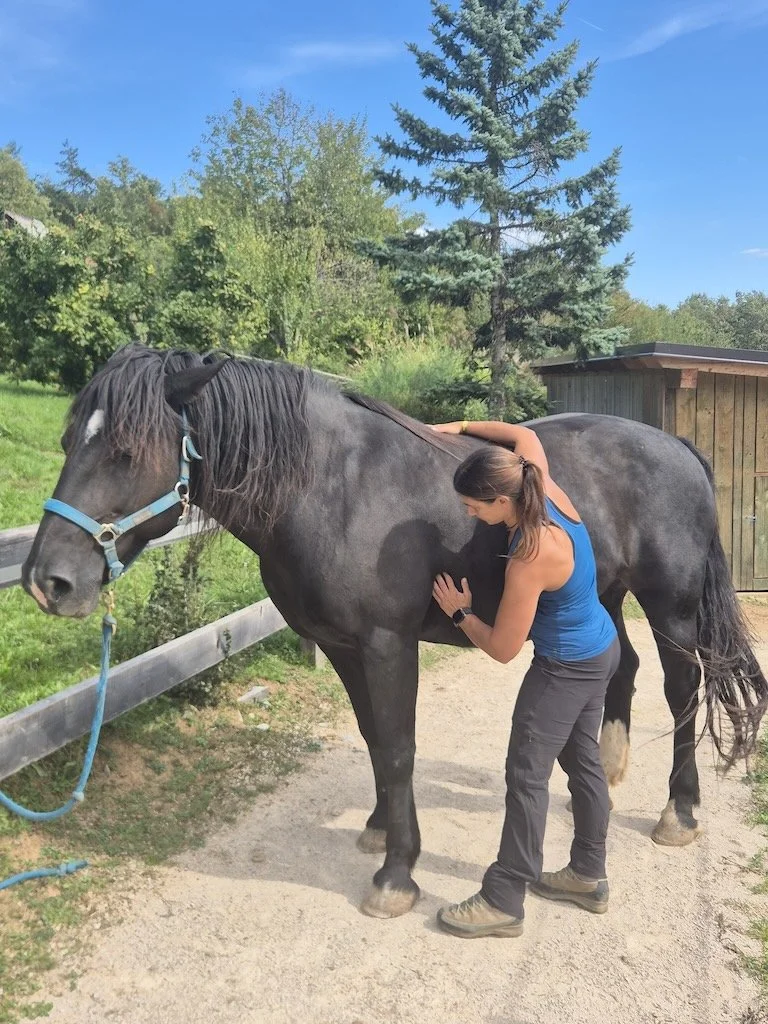The girth line needs your attention!
The area where the girth lies is a very important one from a biomechanics point of view. Restrictions here can have a negative effect on front limb biomechanics, which is why it’s important to address any restrictions here on a regular basis.
Releasing the girth line every time after riding can have a positive effect on this region.
Last week I attended a three-day event for equine bodyworkers with Dr Audrey DeClue. It was a fantastic event which gave me a lot of food for thought. The area we are talking about today was something that I had been pondering about for a while now and I was realizing more and more just how important it is. After hearing Dr DeClue speak, I am reassured that this is indeed an extremely important region.
When talking about common dysfunctional areas of the horse's musculoskeletal system, many people focus on the neck, the back, pelvis and (more recently) the thoracic sling. These areas are getting a lot of attention and often you will find bodyworkers spending a considerable amount of time working on these areas. But, the more you understand the biomechanics of the entire horse, the more you realize that it's not just these areas that deserve our attention.
One of the often-overlooked parts is the area where the girth sits. Not many bodyworkers will work there, but there are so many muscle intersections, not to mention all the fascia, in that area that it makes sense to pay more attention to it. And there's one more pretty important factor that dictates the need for releasing this region – the girth and saddle.
When this area is tight and there are fascial adhesions between the big muscles in the area (for example the latissimus dorsi, the sarratus, the tensor fascia antebrachii, the pectorals), the horse has a limited range of motion in the front limb. Protraction will be difficult for the horse, which might show up as front limb short striding. This then will have its own implications for tension and pain. The girth and saddle can contribute significantly to adhesions in this area, making the problems worse. This is obviously especially true when the girth and/or saddle do not fit well.
So, what are some symptoms of adhesions and restriction in this area? As mentioned, reduced ability to protract is one of them. Sensitivity and girthyness is another very common observation. The horse might have a hard time straightening the carpus when the leg is picked up and protracted (or the handler might have a hard time protracting it at all). In more severe restrictions the horse's carpus might appear unstable and prone to buckling while standing still (Dr Declue refers to this as a »carpal wobble«). The more widespread consequences of restrictions will negatively impact the entire horse – he will not be able to use his thoracic sling correctly, he might be stuck in the wither area, and will thus have a very hard time using his back correctly. So, issues here really do impact the entire horse.
What is there to do? Releasing the superficial fascia in the area can have beneficial effects, which means the rider or owner can actually do a lot. One of the techniques that I recommend to owners is releasing the superficial fascia along the girth line. Place the tips of your fingers just behind the elbow and pull the skin upwards, along the girth line. Imagine you are trying to pull the skin over the underlying muscle. The pressure you are exerting with your fingers should be directed upwards, not inwards, so you can glide upwards along with the girth line. Do that on both sides every time after you ride. Obviously, this is not a substitute for regular bodywork, but it will help with keeping this area functioning well.
